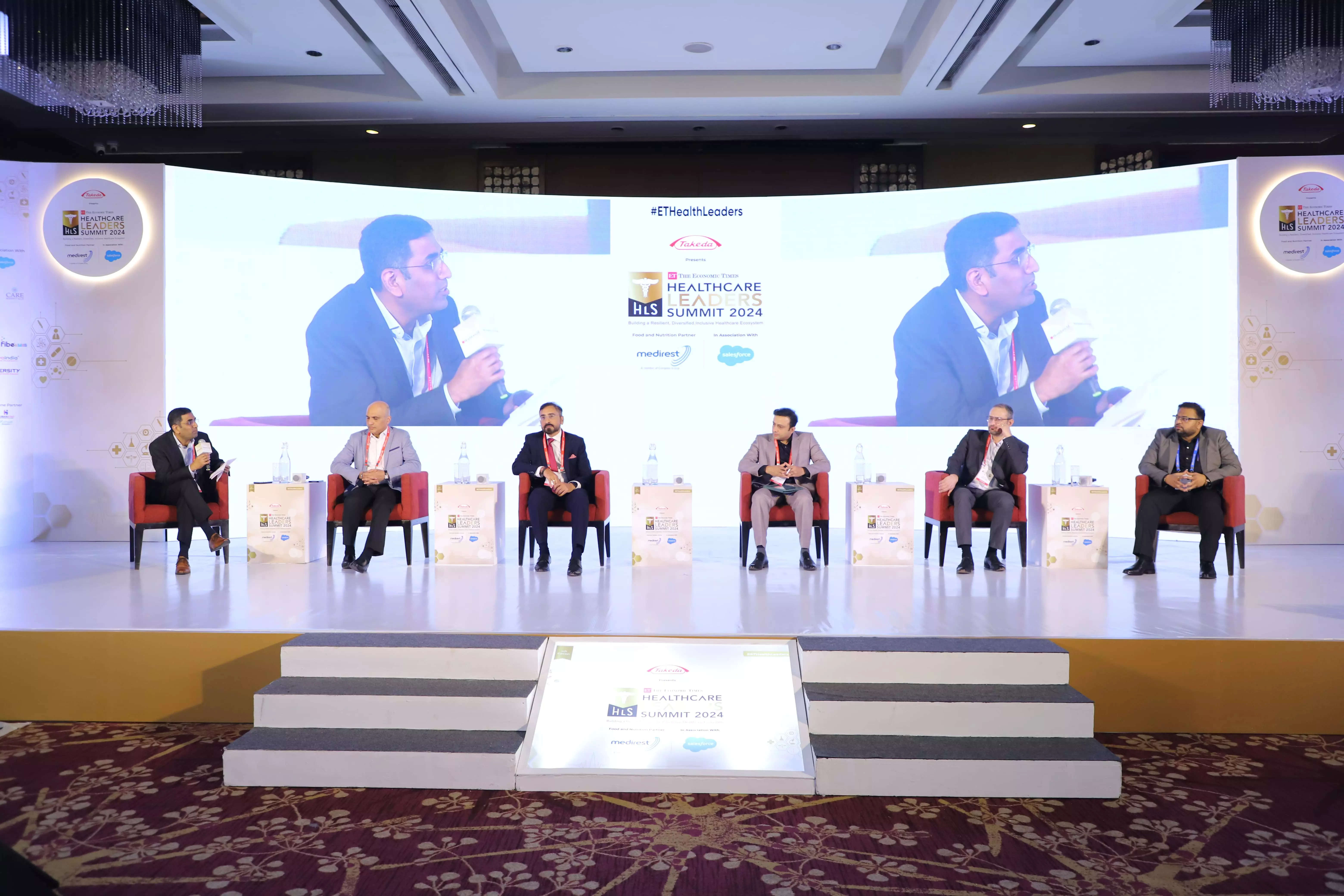
By Rashmi Mabiyan and Shilpasree Mondal
New Delhi: India, the most populous nation on Earth, spends just 2.6 per cent of its GDP on healthcare, leaving more than half of healthcare costs to be borne by citizens, whose GDP per capita hovers around 2,500 USD. To address the challenges of accessibility and affordability in healthcare, ETHealthworld in its fourth edition of Healthcare Leaders Summit 2024 brought together a CEO panel who deliberated on the topic “Strengthening Public-Private Partnerships for Sustainable Healthcare Solutions.”
PPP models are emerging as promising solutions to fill the gaps that exist in accessibility, affordability, and infrastructure. Industry experts discussed how the funding from corporate social responsibility, private equity, and the government scheme would operate simultaneously to achieve effective healthcare mechanisms across the country.
With aspirations of building a $30 trillion economy, Bhanu Pratap Kalmath S J, Partner at Grant Thornton Bharat, commenced the session by pointing out the critical role of a healthy India and how PPP can help achieve this goal. Dr. Suchin Bajaj, Founder & CEO of Ujala Cygnus Healthcare highlighted that in metros like Delhi and Mumbai, people have access to excellent healthcare, but just 50 kilometres away, healthcare services start crumbling. “We lose the ‘golden hour’ because patients can’t access timely care,” he said.Mitesh Dave, Group CEO of Krsnaa Diagnostics, talked about the importance of diagnostics in healthcare by noting, “Up to 75 per cent of medical decisions are based on diagnostic tests, yet diagnostic infrastructure is severely lacking in smaller towns. On its own, Krsnaa Diagnostics has been a pioneer of PPP diagnostic projects across India. Still, it is facing big challenges in small towns. “Basic infrastructure like electricity and trained manpower are major bottlenecks. We often see delays in financial reimbursements from the government, which hampers our ability to sustain services in rural areas,” he added.He also stated that there needs to be much better collaboration between the public and private sectors. The government has to develop the basic infrastructure and then we can take care of the rest. In addition, if the government focuses on skill development and training local youth as paramedics or technicians, then we can generate an eco-system.
Speaking on how CSR money has emerged as the silver bullet to take health initiatives forward Dr Santosh Shetty, CEO & Executive Director at Kokilaben Dhirubhai Ambani Hospital said that these funds should be used strictly for long-term advantages to create sustainable ecosystems.Kokilaben Hospital has used CSR funds to tackle some of the most significant healthcare problems. For instance, they partnered with Coal India in order to provide bone marrow transplants to children who suffer from thalassemia. “Thanks to CSR funding, we can subsidize such expensive treatments so that care, which would otherwise be unaffordable for many families, can reach them,” shared Dr Shetty.
He emphasizes the need for more comprehensive coordination between CSR initiatives and healthcare providers. “We should focus CSR efforts on areas like preventive health care and outreach programs in rural areas. If we manage CSR funds judiciously, they could well transform healthcare delivery in India,” he sums up.Private equity players are now focusing increasingly on investments in healthcare-in fact, they are specifically looking at PPP models. Siddharth Iyer, Director of Healthcare & Lifesciences at Equirus Capital, writes down the scope and risks of such investments. “PE firms are keen on healthcare for long-term growth potential, but PPP models come with risks, especially policy stability,” he explains.
Healthcare is a state subject in India, and constant policy changes will make investments difficult to commit long-term projects for investors. “That said, PPP models are asset-light, scalable, and can be rich in return if well-managed.” He further underlines that financing healthcare projects needs a balance between profitability and social impact. “The role of government in providing consistent support through subsidies and policy frameworks is important. Private players will only invest if they see a stable, predictable environment,” says Iyer.While government schemes like Ayushman Bharat cover the most vulnerable, it is the middle-income families which bear the cost.
“Ayushman Bharat covers about 12.5 crore families. What is happening to the middle class? They are not poor enough to be covered under the government scheme; they cannot, however, afford the spiralling private sector costs, says Parvaiz Hussain, Business Head at Fibe. To bridge this gap, he suggested that alternative financing models be also looked into. “Government schemes can be supplemented with medical loans, crowdfunding platforms, and private health insurance. Beyond this, these can be customized to include additional costs not covered under Ayushman Bharat, such as outpatient services, dental care, and fertility treatments,” he explains.
For PPP models to thrive, good policy support and financial sustainability are a must, Dr Suchin Bajaj says, “Even when states like Uttarakhand and Kashmir have subsidy policies for hospitals, disbursement delays make it difficult for private players to keep operations running smoothly. We need faster, transparent processes.”Massive manpower shortages can be dispelled through incentives for healthcare professionals, by way of tax breaks, financial bonuses, and improvement of living conditions in rural and semi-urban areas.
“We must make it attractive for doctors and healthcare professionals to work in those regions. This will only happen if the government steps up and creates favourable conditions,” Bajaj argues. The success story of World Bank-sponsored PPP projects, like in Odisha, can be a template for other similar projects in the country. “The project is tied to the achievement of certain operational milestones that will indicate transparency and accountability. If this model could be replicated across the country, then the government and private players will build mutual trust,” concludes Bajaj.




